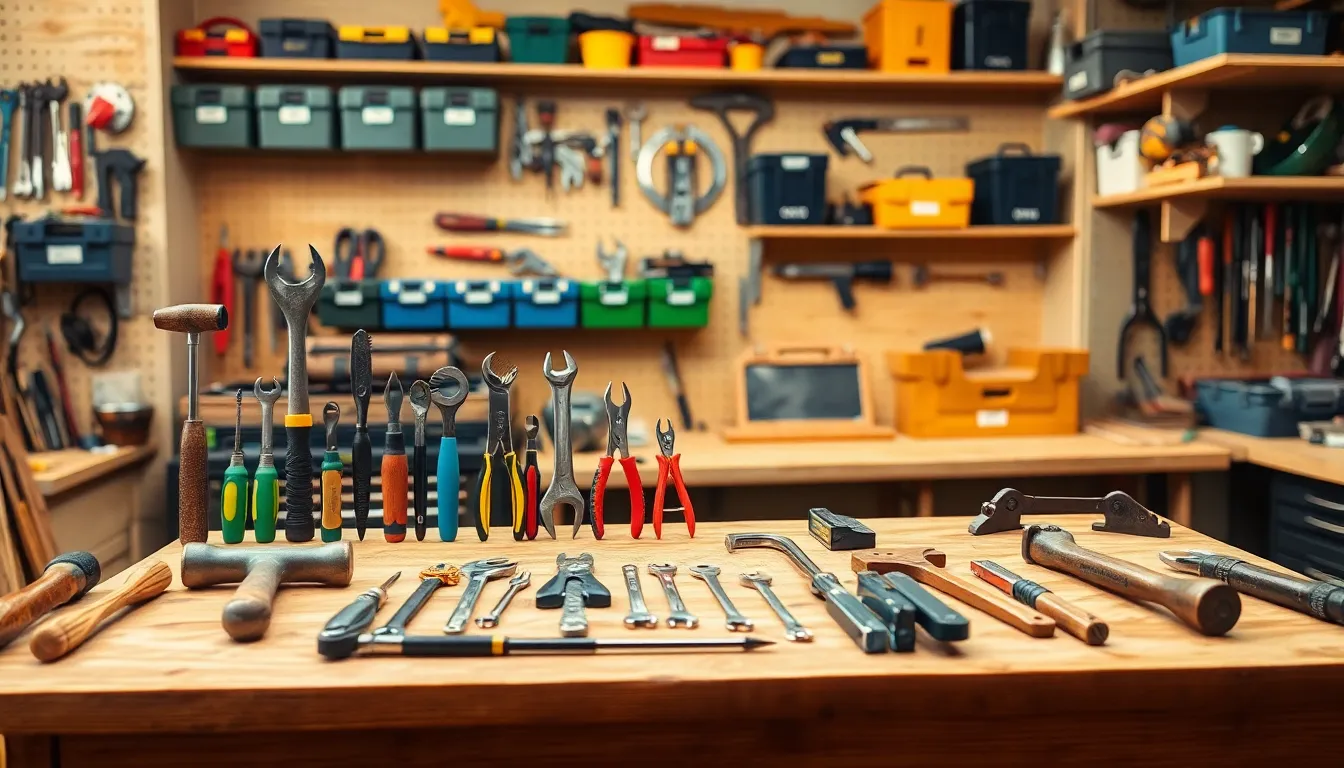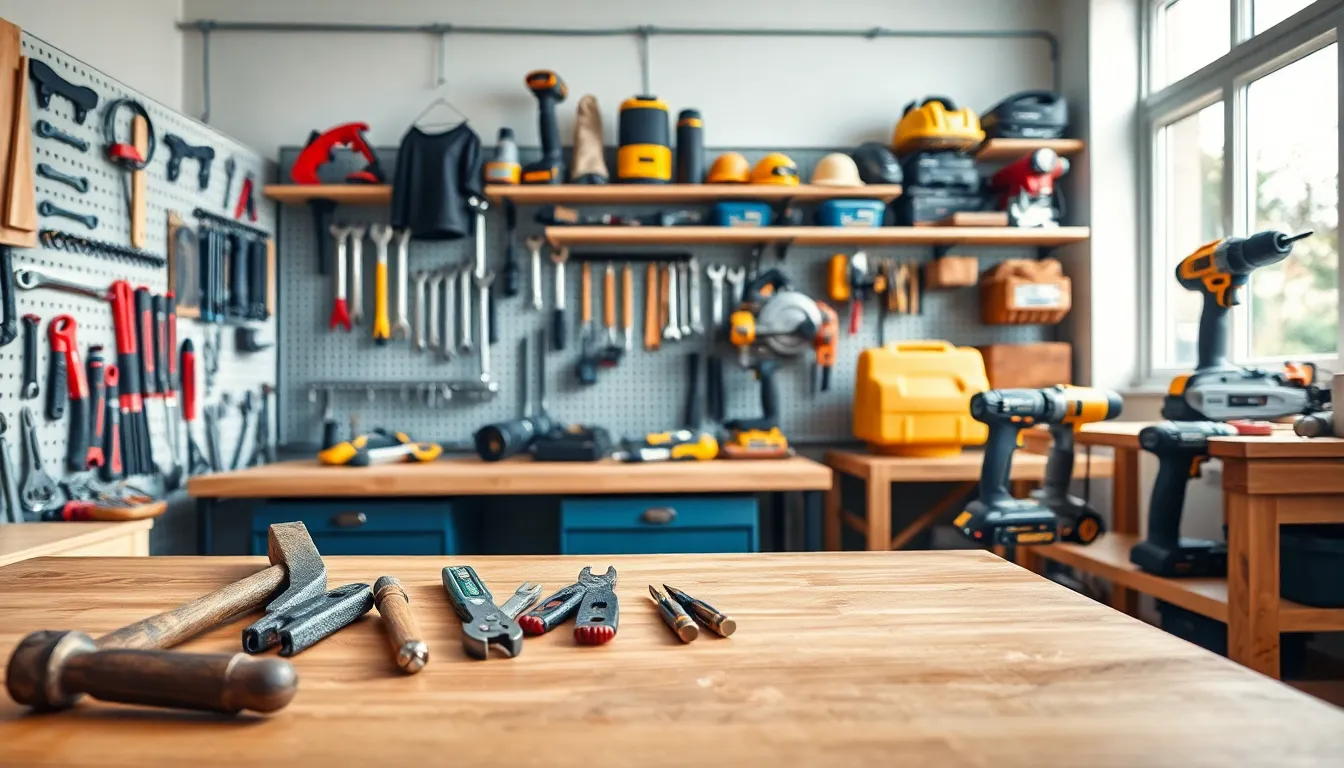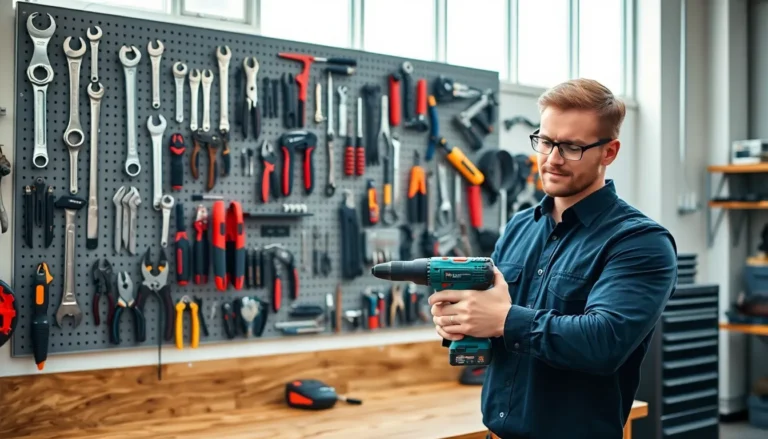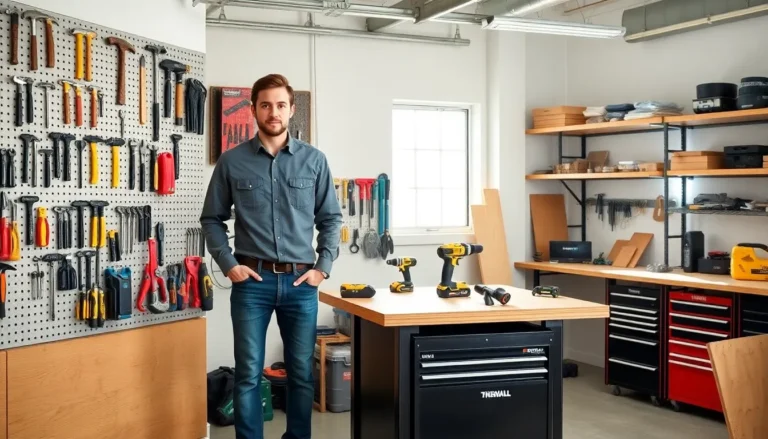When it comes to tackling DIY projects or professional tasks, the right workshop tools and equipment can make the difference between a job well done and a complete disaster. Picture this: you’ve got your weekend project lined up, but all you have is a rusty hammer and a nail. Not exactly the dream team for carpentry. So, how can one upgrade from the ‘barely surviving’ tool set to the ‘ready to conquer the world’ assortment? This guide dives into the essential workshop tools and equipment every budding craftsman (or woman) should have in their arsenal. Equip yourself with knowledge, and you’ll tackle projects like a seasoned pro.
Table of Contents
ToggleEssential Hand Tools

Every workshop begins with the foundation of hand tools. They provide versatility, precision, and often a bit of elbow grease. Here’s a rundown of the must-have hand tools:
1. Hammers
Whether it’s a claw hammer for driving nails or a sledgehammer for heavier work, having the right hammer is crucial. Don’t settle for less than what fits your needs.
2. Screwdrivers
Just as critical, screwdrivers come in various types. Make sure to have both Phillips and flathead screwdrivers ready. Bonus points if you grab a set with magnetic tips.
3. Pliers
From gripping to bending, pliers are indispensable. Needle-nose pliers are great for reaching into tight spots, while slip-joint pliers add versatility to your toolkit.
4. Wrenches
Adjustable and fixed wrenches are essential for handling nuts and bolts. These little wonders can make or break your next home project.
5. Handsaws
Yes, electric saws are popular, but the classic handsaw hasn’t lost its charm. Having one in the toolbox allows for precision cuts and a bit of good old-fashioned exercise.
Power Tools: Types And Uses
Power tools are game-changers. They save time, reduce physical effort, and significantly increase the quality of work. Here’s an overview:
1. Drills
Cordless drills are favorites among DIY enthusiasts. They’re perfect for not just drilling, but also for driving screws into various materials.
2. Circular Saws
Need straight cuts? A circular saw does the job efficiently. Ideal for lumber, plywood, and more.
3. Jigsaws
When intricate cuts are needed, jigsaws shine. They curve, they carve, and they make you look like a woodworking wizard.
4. Sanders
Want that smooth finish? Random orbital sanders take care of it. With less effort, you can achieve professional-quality results.
5. Routers
These versatile tools help with creating edges and grooves, adding the polish to final woodworking projects. They can transform plain edges into works of art.
Measuring And Layout Tools
Measuring accurately can save time and materials, making measuring and layout tools essential in every workshop. Consider these tools:
1. Tape Measures
They’re the classic measuring tool. Opt for a durable one that locks and retracts smoothly.
2. Square
A carpenter’s square ensures right angles and straight lines, essential for framing and forming right angles.
3. Levels
Levels ensure everything is straight. Laser levels are innovative, providing precision over longer distances.
4. Marking Tools
Pencils, chalk lines, and markers help indicate where to cut or drill. Always have multiple marking tools handy to suit any surface.
Safety Equipment For Workshops
Safety should always be a priority in any workshop. Equip yourself with the necessary safety gear:
1. Safety Glasses
Protect your eyes from flying debris, especially when using power tools. Ergonomic designs enhance comfort.
2. Ear Protection
Loud tools can damage hearing. Invest in ear plugs or earmuffs to reduce noise levels while working.
3. Dust Masks
Keep harmful dust and particles at bay by wearing a dust mask. Health is wealth, after all.
4. Gloves
Protect your hands with the right gloves. Depending on the task, you’ll find different materials suited for cutting, drilling, or sanding.
Storage Solutions For Tools And Equipment
Keeping tools organized saves time and reduces the hassle of searching for misplaced equipment. Here are some smart storage solutions:
1. Toolboxes
A sturdy toolbox is fundamental. Choose sizes based on your tool collection and consider portability.
2. Shelving Units
Open shelving provides visibility and easy access to frequently used items. Categorize tools for efficiency.
3. Pegboards
Pegboards make tools accessible and showcase your collection stylishly. Customize your pegboard with hooks and shelves for efficient storage.
4. Drawer Organizers
Keep small tools and parts sorted with drawer organizers. This prevents clutter and ensures everything is in its place.
Maintenance And Care Of Tools
Maintaining tools increases their lifespan and keeps them in top condition. Here are some essential maintenance tips:
1. Cleaning
Regularly clean tools after each use. Wipe them down to remove dirt, dust, and moisture to prevent rust.
2. Sharpening Blades
Dull blades can lead to accidents. Sharpen them periodically to ensure they perform efficiently.
3. Proper Storage
Store tools in a dry, cool environment to avoid rust and damage. Avoid tossing them in a pile where they can get damaged.
4. Routine Checks
Periodically check tools for wear and tear. Replace any worn-out parts immediately to maintain efficiency.



